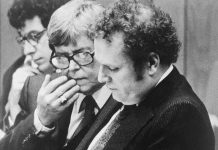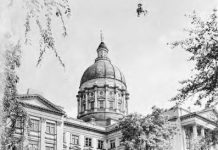
 It might have seemed like an awful lot of fuss to make over the death of an ape: thousands of mourners, a live TV broadcast, corporate sponsors vying for the right to transport his remains back to Africa, and a eulogy by an icon of the civil rights movement. But in February 2000, when Willie B. died of complications from cardiomyopathy at age forty-one, he was more than the patriarch of a growing brood of majestic silverback gorillas; he was a symbol of Atlanta’s fighting spirit and indefatigable will to turn embarrassment into civic pride.
It might have seemed like an awful lot of fuss to make over the death of an ape: thousands of mourners, a live TV broadcast, corporate sponsors vying for the right to transport his remains back to Africa, and a eulogy by an icon of the civil rights movement. But in February 2000, when Willie B. died of complications from cardiomyopathy at age forty-one, he was more than the patriarch of a growing brood of majestic silverback gorillas; he was a symbol of Atlanta’s fighting spirit and indefatigable will to turn embarrassment into civic pride.“We were moved to set him free, and perhaps in so doing we set ourselves free and could learn that we can all live together with all the animals that God created,” eulogized Andrew Young of the gorilla, whose relocation from a concrete cell to a lush outdoor habitat captured Atlanta’s heart.
Willie B.—named for Atlanta Mayor William B. Hartsfield—was captured in Africa as an infant in the late 1950s and as a toddler was brought to Atlanta, where he endured decades in shameful captivity. Cooped up in an indoor cage, Willie B. spent his days watching TV or idly tapping at a tire swing, living in conditions that earned what was then called Atlanta Zoo a reputation as one of the worst in the country. “Mournfully wailing apes and restlessly pacing, bowlegged jungle cats housed in enclosures too small for your pet Siamese are just part of the problem,” wrote Russell Shaw in a March 1984 Atlanta magazine cover story. The same year, Parade named the zoo to its ten-worst list, and civic leaders hustled into action.
The transformation of the zoo (rechristened Zoo Atlanta) was radical; the most dramatic evidence was the opening of the gorilla habitat in May 1988. After twenty-seven years indoors, Willie B. made a tentative foray onto the grass and under the sky. When he died twelve years later, he was at home on the verdant slopes of the zoo’s re-created rainforest.
Photograph courtesy of Zoo Atlanta
Advertisement















